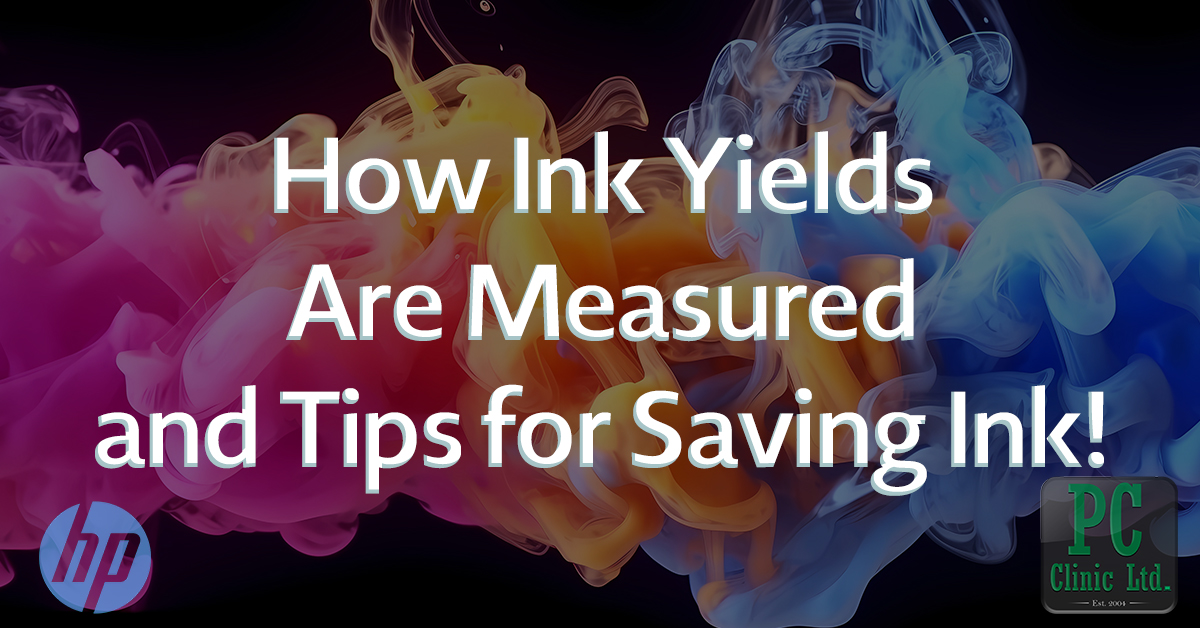Introduction
Have you ever wondered how manufacturers determine the estimated page yield of their ink cartridges? HP (Hewlett-Packard) is one of the leading manufacturers of inkjet printers and ink cartridges, and they along with other manufactures have a specific method for measuring ink yields. In this blog post, we will explore how ink cartridge yields are measured by these manufactures of inks and at the end look at ways on how to get the most of your ink cartridges.
How Ink Yield is Measured
HP employs a standardized method to determine the estimated page yield of their ink cartridges. This method is known as the ISO/IEC 24711 and 24712 standards for inkjet page yields. It involves printing a set of specific test pages that simulate real-world printing scenarios. The exact number of pages produced can vary depending on the content of the documents being printed, but these standards provide a baseline for comparison across different printer models and manufacturers.
To be more specific, HP follows these standards by printing a set of test pages that include text, graphics, and images. The process is repeated until the cartridge’s ink is exhausted. The resulting page yield is then used to provide consumers with an estimated number of pages they can expect to print using the cartridge.
Average Page Yields
Lets examine HP 667 cartridges as they are the newest on market and the most readily available at this point in time. HP 667 ink cartridges are typically designed for use in HP DeskJet 2700 series printers. The page yield of an ink cartridge can vary depending on the specific cartridge model and the printing conditions. HP usually offers standard and high-yield (XL) versions of their ink cartridges as well.
For the HP 667 ink cartridges, the page yield is as follows:
- HP 667 Standard Black Ink Cartridge: Approximately 120 pages.
- HP 667 Standard Tri-color Ink Cartridge: Approximately 100 pages.
Please note that these page yield estimates are approximate and can vary based on factors such as the content of the printed documents, the printer settings, and the printing conditions. For a more accurate estimate of the page yield for your specific usage, it’s recommended to refer to the product packaging or the HP website for the most up-to-date information. Additionally, you can monitor your ink levels using your printer’s software to determine when your cartridge needs replacement.
Tips To Save Ink
We all know how troublesome it can be to have to keep purchasing ink cartridges. Here are some helpful tip on saving ink!
- Choose the Right Print Quality: Most printers offer different print quality options, such as draft, normal, or high quality. Choosing a lower quality setting can significantly reduce ink consumption.
- Use Ink-Saving Fonts: Some fonts require less ink than others. Consider using more ink-efficient fonts like Arial or Calibri instead of heavier ones.
- Preview Before Printing: Always preview your documents before hitting the print button. This can help you identify and eliminate unnecessary pages or sections.
- Print in Grayscale: If your document doesn’t require color, print it in grayscale. This can save a significant amount of color ink.
- Update Your Printer Drivers: Ensure your printer drivers are up to date. Newer drivers may include optimizations for ink usage.
- Store Extra Ink Cartridges Properly: Store any extra ink cartridges in a cool, dry place to prevent them from drying out prematurely.
- Print Regularly: Inkjet printers can dry up if left unused for an extended period. To prevent this, print a test page or small document periodically.
Conclusion
By following these tips and understanding how HP measures ink yields in their printer ink cartridges, you can make more informed decisions about your printing habits and reduce your ink consumption. This, in turn, can help you save money and minimize the environmental impact of printing and have an overall better printing experience.
THANKS FOR READING!
If you have any questions or would like to make a purchase, feel free to contact us!

